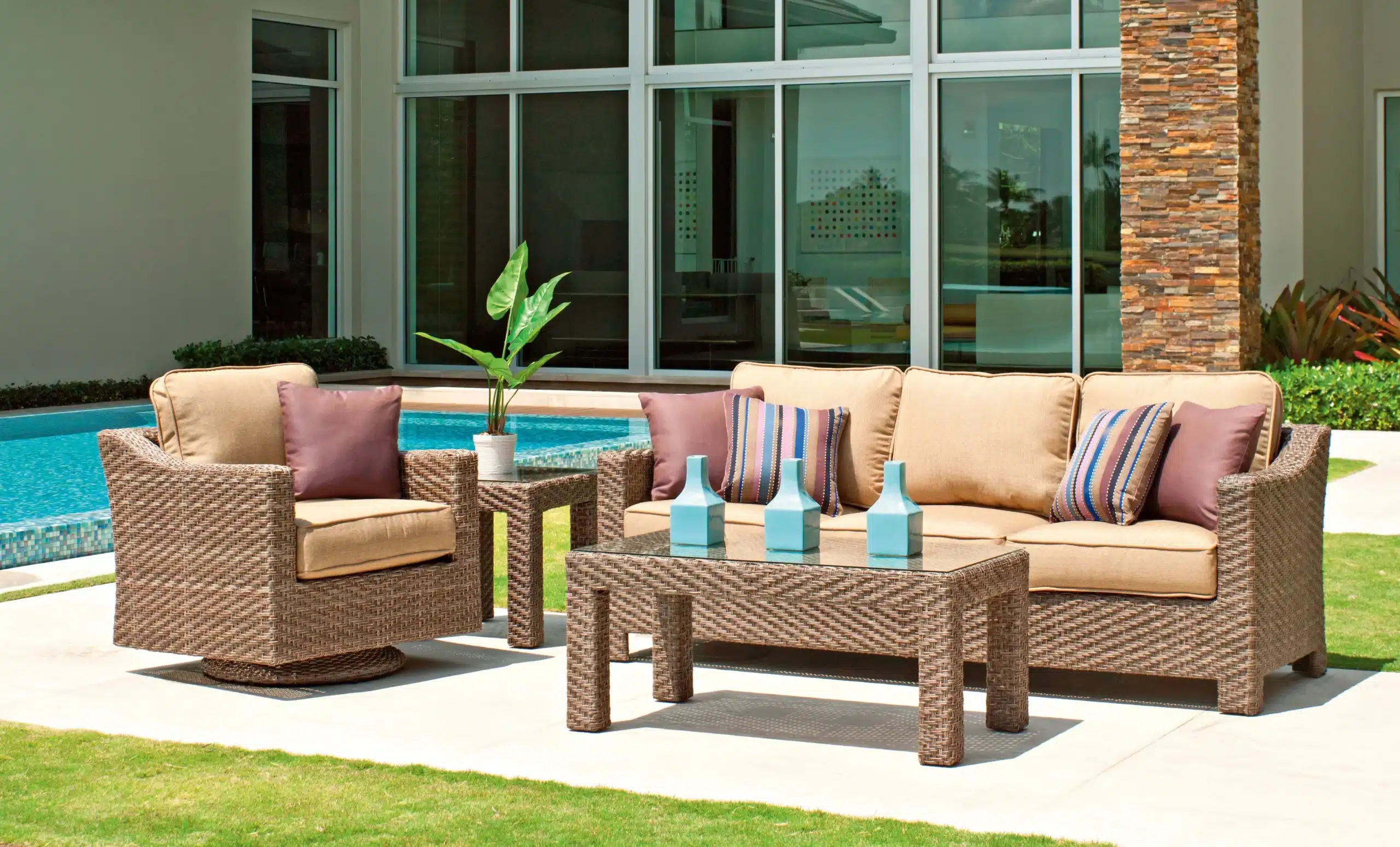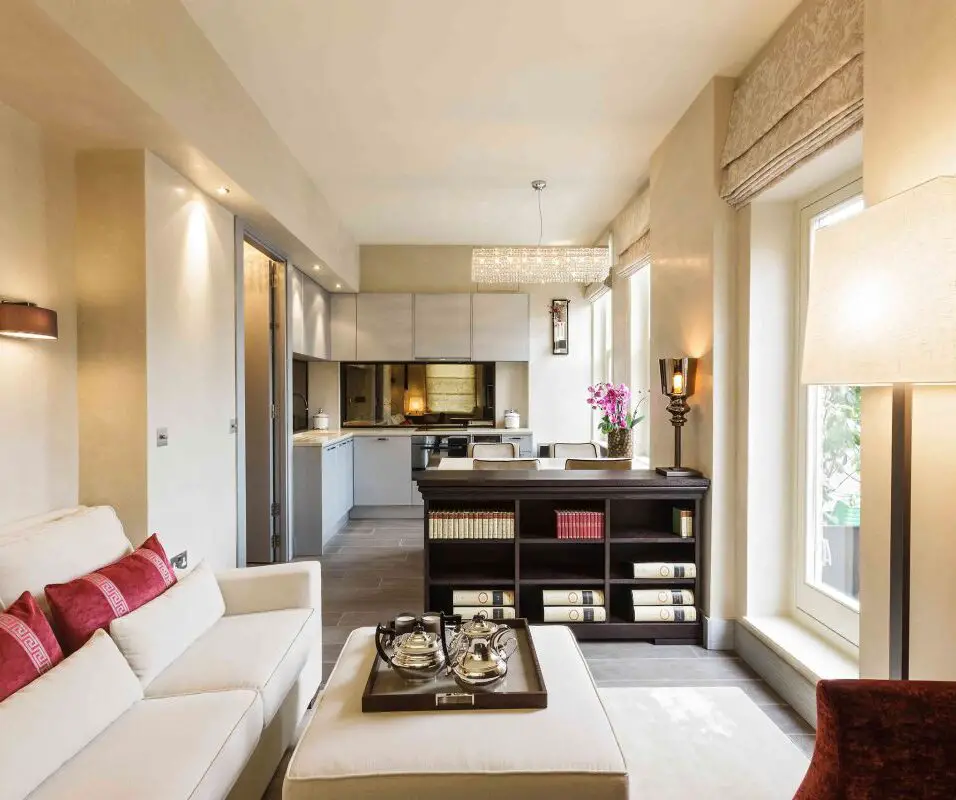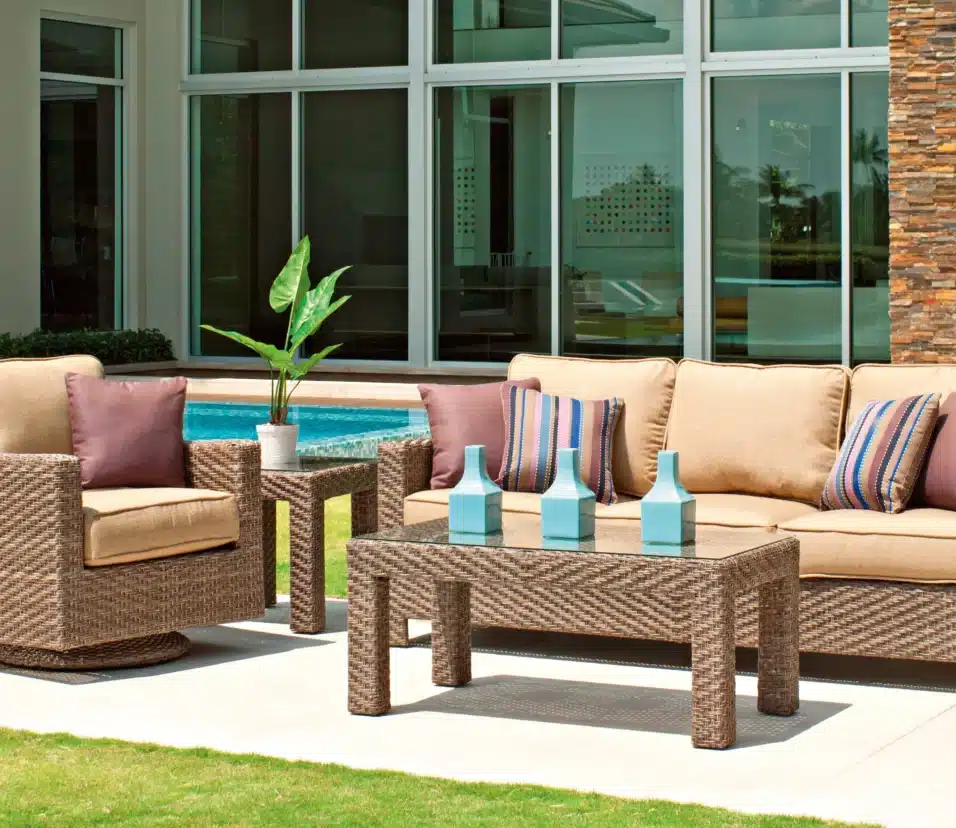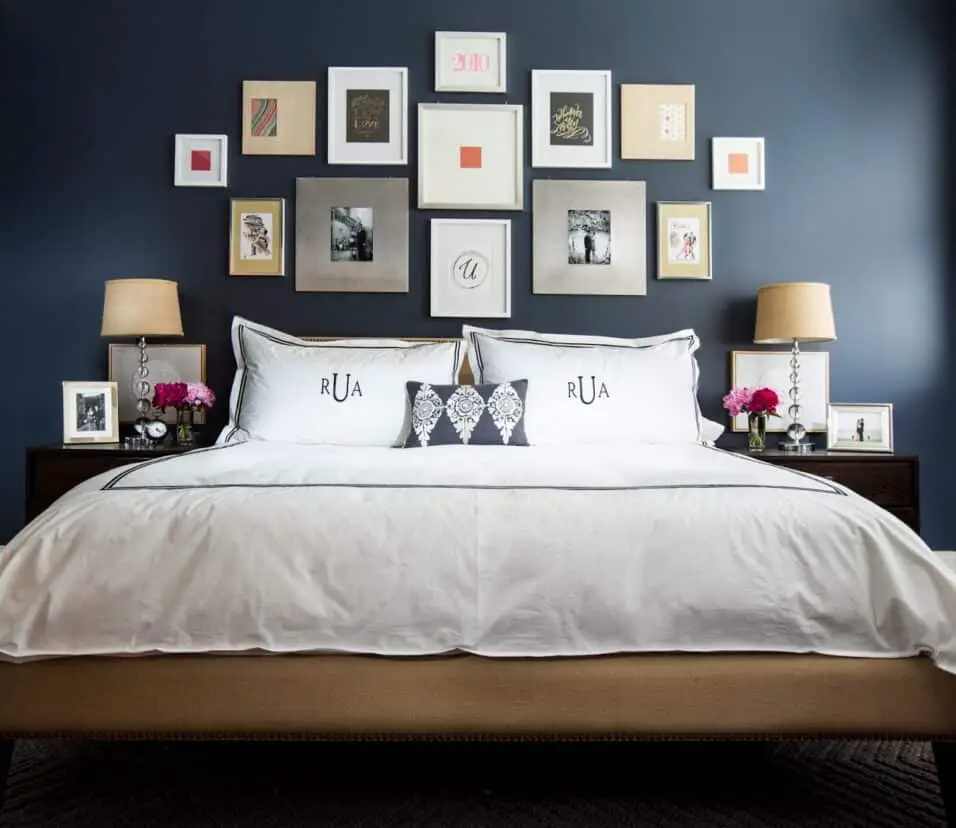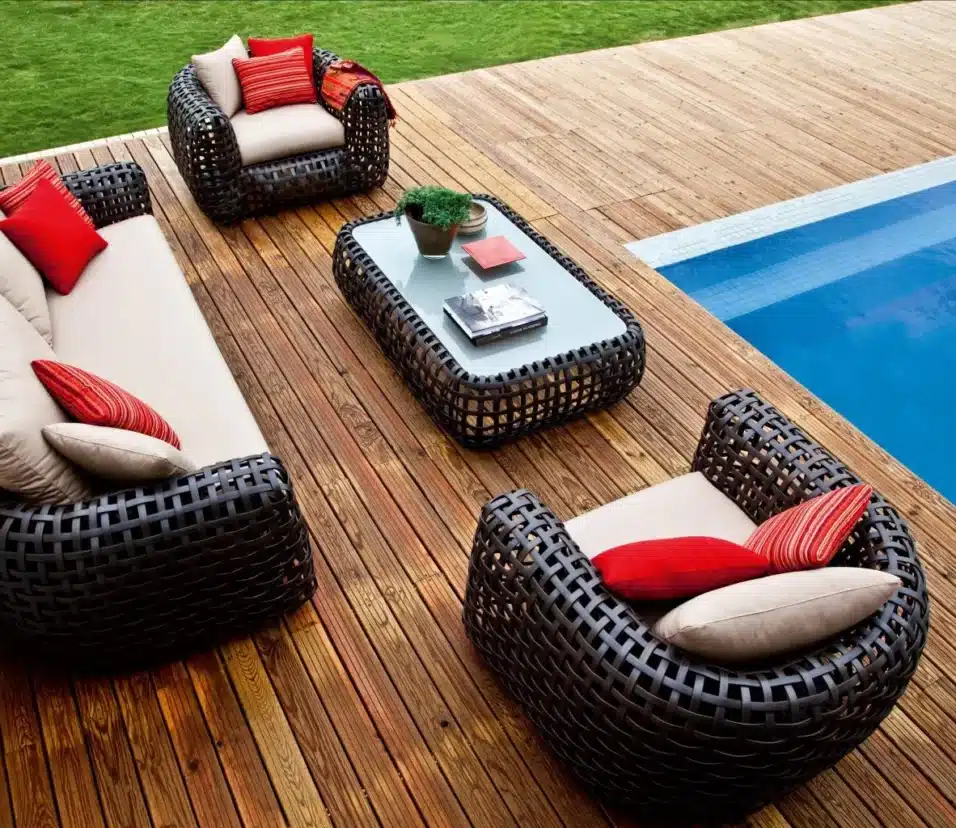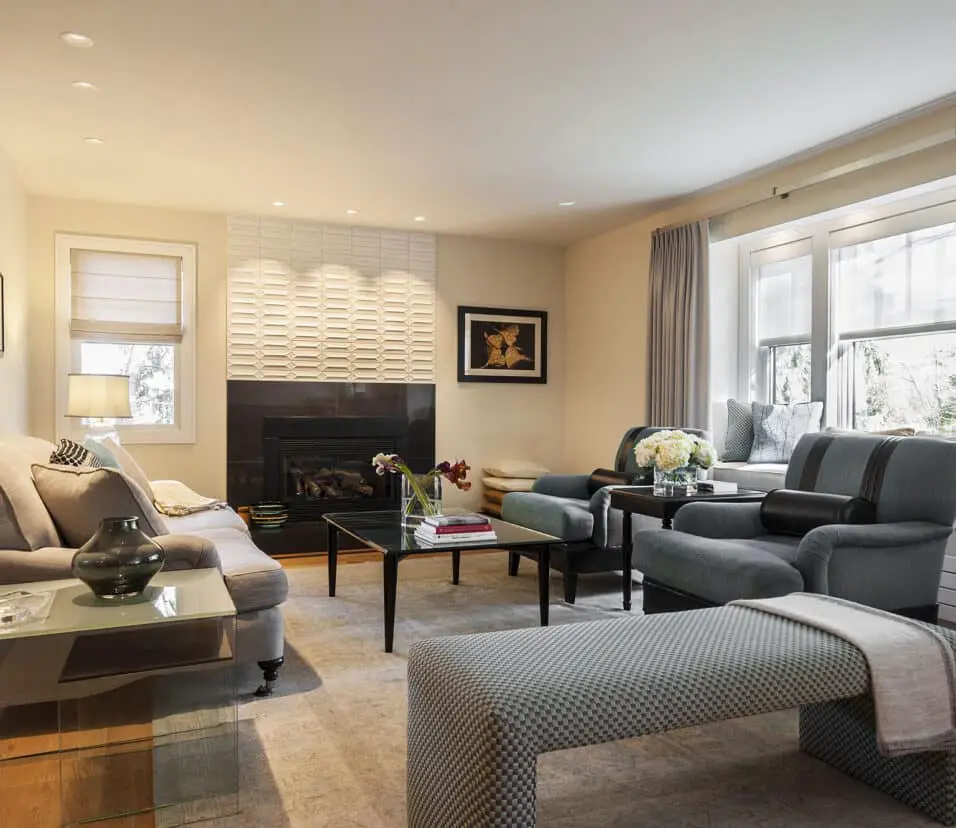How To Arrange Patio Furniture
Introduction
How To Arrange Patio Furniture: Creating a well-designed and inviting outdoor space is an exciting endeavor that allows you to transform your patio into a haven of relaxation, entertainment, and comfort. Whether you have a cozy balcony, a spacious deck, or a sprawling backyard, arranging your patio furniture thoughtfully can make a world of difference in how you and your guests enjoy the outdoors.
In this guide, we will explore the fundamental principles and creative tips to help you maximize the baseboard heater potential of your patio space. From selecting the right furniture pieces to finding the perfect layout that suits your needs and preferences, we’ll cover it all. By the end of this journey, you’ll be equipped with the knowledge to turn your patio into a delightful retreat that seamlessly blends style and functionality.
Divide your patio into functional zones based on your activities. Segregate spaces for dining, lounging, and perhaps a reading nook. Each zone should flow seamlessly into the next, allowing for easy movement and a harmonious ambiance. Ensure there’s enough room for people to move around comfortably without bumping into furniture or obstacles. A clear traffic flow makes the space feel more inviting and accessible.
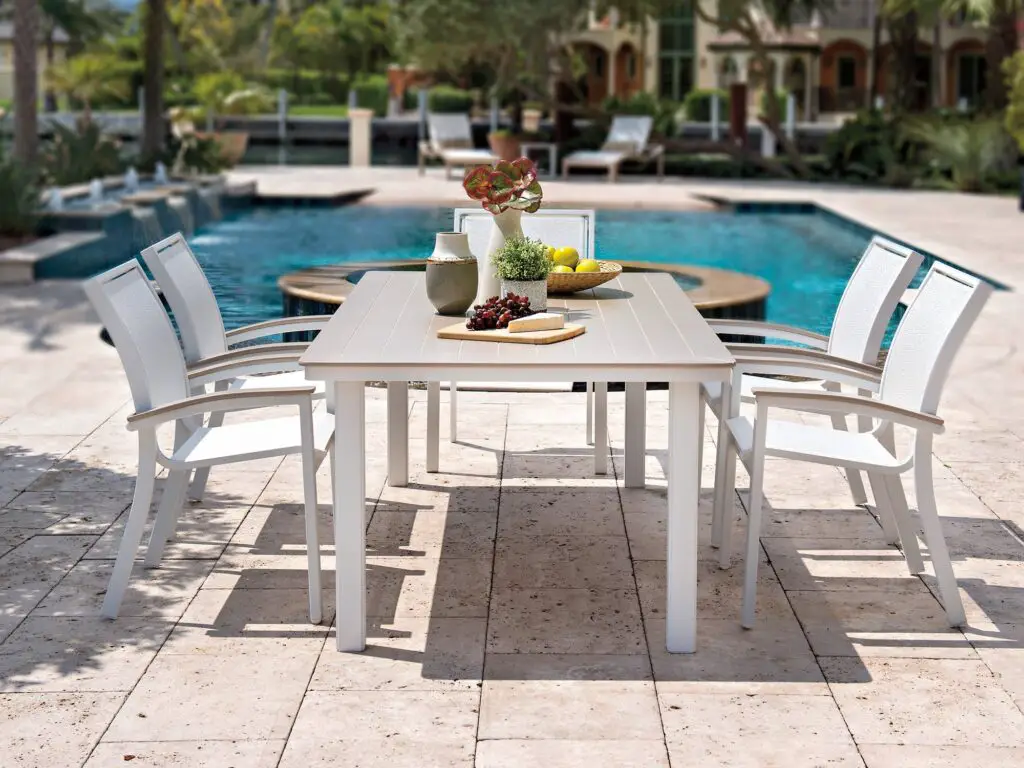
How to stage patio furniture?
7 Ways to Stage Patio Furniture For Your Listings
- Create the illusion of more space with a sectional.
- Encourage conversation with a mix of chairs.
- Center seating around a focal point .
- Set the mood with warm lighting.
- Incorporate outdoor dining and eating into the mix
- Get up close and personal with face-to-face seating.
Begin by cleaning your patio thoroughly and removing any clutter or unnecessary items. Sweep away debris, wipe down furniture, and clear out any non-essential items. A clean and tidy space provides a blank canvas to work with during the staging process.
Consider the purpose of your patio staging. Are you aiming for a cozy relaxation spot, an outdoor dining area, or a vibrant entertaining space? Understanding the purpose will guide your furniture selection and layout.
Select furniture pieces that align with the purpose and style you envision. Opt for high-quality, weather-resistant materials that can withstand the elements and maintain their appeal over time. Ensure the furniture complements the overall theme and aesthetic of your home.
Establish a focal point on your patio to draw attention and anchor the staging. This could be a beautiful outdoor fireplace, an elegant dining table, or a captivating outdoor sculpture. The focal point serves as a centerpiece that sets the tone for the entire space.
Arrange the furniture in a way that encourages a natural flow of movement. Avoid blocking pathways and entrances, ensuring that guests can navigate the patio comfortably. Consider how people will move through the space and arrange furniture accordingly.
How do you arrange a patio seat?
Divide Your Space into Two Seating Spaces
Pull a loveseat and two chairs tightly together on one end, then do a simple pair on the other end. This way, you can have a more intimate, private setting for when you’re reading a book, but when guests come over, you have a larger outdoor entertaining space too.
Assess Your Space
Before diving into the arrangement, take a close look at your patio area. Measure the dimensions and consider any architectural features or natural elements, such as trees or garden beds, that may impact the layout. Understanding the available space is essential for choosing the right furniture and creating a well-proportioned arrangement.
Define the Purpose
Consider how you intend to use your patio seating area. Is it primarily for dining, relaxation, or entertaining guests? Knowing the purpose will guide your furniture selection and arrangement to suit your lifestyle and needs.
Choose the Right Patio Furniture
Select furniture pieces that align with your purpose and fit the available space. Outdoor furniture comes in various materials like wicker, metal, wood, or resin, each with its own charm and durability. Ensure that the furniture you choose is weather-resistant to withstand the elements and retain its appeal over time.
Plan the Layout
Begin the arrangement by establishing a focal point. This could be a beautiful outdoor rug, a fire pit, or a well-placed centerpiece. The focal point will anchor the seating area and draw attention, creating a cohesive design.
Create Comfortable Seating Zones
Divide your patio seating area into functional zones based on your activities. For instance, position a dining table and chairs in one area for al fresco meals and place cozy lounge chairs or a sectional sofa in another zone for relaxation and conversations. Allow ample space for free movement between the zones.
How to arrange furniture on an outdoor deck?
8 Rules of Thumb for Arranging Patio Furniture
- Decide on a Focal Point.
- Find a Purpose for Your Patio.
- Design Like a Traffic Conductor.
- Placement of Outdoor Furniture.
- Make if Feel Like You’re at Home.
- Separate the Outdoor Kitchen.
- Divide and Conquer.
- Accessorize and Organize!
Determine how you intend to use your outdoor deck. Is it primarily for dining, lounging, entertaining, or a combination of activities? Clarifying the purpose will guide your furniture selection and layout to suit your lifestyle and needs.
Opt for durable and weather-resistant outdoor furniture that can withstand the elements and retain its appearance over time. Materials like teak, aluminum, wicker, and weatherproof fabrics are excellent choices for outdoor use. Ensure the furniture aligns with your deck’s style and complements the overall aesthetic of your home.
Create a rough sketch of your deck and experiment with various furniture arrangements. Consider the flow of movement, and position furniture to allow for easy access to all areas of the deck. If your deck offers a stunning view or a particular focal point, arrange the furniture to take full advantage of it.
Divide your deck into distinct functional zones based on your activities. For example, set up a dining area with a table and chairs for al fresco meals, a cozy seating area with sofas or chairs for relaxation, and a space for plants or a bar cart for added charm. Each zone should serve a specific purpose and contribute to the overall design.
Maintain a sense of balance and harmony by considering the size of your furniture pieces in relation to the deck’s dimensions. Avoid overcrowding the space with oversized furniture, as it may make the deck feel cramped. Instead, aim for a well-proportioned arrangement that leaves enough room for comfortable movement.
Where is the best place to put a patio?
A cooking or dining patio should be located close to the house for convenience. You don’t want to be carrying food a long ways from the indoor kitchen.
Take note of your property’s surroundings and the level of privacy you desire. A patio that faces a busy street or a neighbor’s window may feel less private and intimate. Look for areas that offer a sense of seclusion, such as spaces surrounded by trees, shrubs, or fencing.
If your property boasts beautiful scenery, such as a garden, lake, mountains, or a skyline, position your patio to take advantage of these views. A well-placed patio can create a captivating backdrop for outdoor activities and enhance the overall atmosphere.
Ensure your patio is easily accessible from the interior of your home. Ideally, it should be located near a backdoor or an area that is frequently used by family members and guests. Easy access promotes seamless indoor-outdoor living and encourages frequent use of the patio.
Be mindful of prevailing wind directions and weather patterns in your area. A patio exposed to strong winds may not be as comfortable for dining or relaxing. Consider incorporating windbreaks, such as tall plants or strategically positioned walls, to create a more sheltered and pleasant environment.
Take advantage of the natural features of your property when choosing the patio’s location. Incorporating existing elements like trees, flower beds, or rock formations can lend character and charm to the outdoor space.
What is the best mix for laying a patio?
Mix four parts building sand and one part cement in a bucket, adding clean water until you achieve a slightly moist, smooth, damp consistency. Add the water slowly to the mix to help avoid creating a wet or sloppy mortar that runs easily off a trowel or jointing tool.
After excavation, compact the soil using a plate compactor or tamper to create a stable and even surface. Proper compaction helps prevent settling and ensures a solid foundation for the patio.
The first layer of the patio mix is the sub-base, which provides additional stability and aids in proper drainage. It is recommended to use crushed stone or gravel as the sub-base material. Level and compact the sub-base to create an even surface.
The bedding layer is the next component of the patio mix and is typically made of coarse sand. The sand provides a smooth surface for the patio pavers or stones to sit on and allows for slight adjustments during installation. Spread the sand evenly and ensure it is compacted to provide a stable base for the pavers.
Once the bedding layer is in place, start setting the patio pavers or stones according to your desired pattern. Use a rubber mallet or hand tamper to gently tap the pavers into place, ensuring they are level and aligned with each other.
After all the pavers are in place, fill the joints between them with fine sand or polymeric sand. Polymeric sand is a preferred option as it hardens when water is applied, providing a more secure and weed-resistant joint.
What is best way to finish outdoor furniture?
An epoxy sealer with an exterior varnish topcoat is the most durable outdoor finish and can last for many, many years.
Regardless of the material, proper cleaning and maintenance are essential for outdoor furniture. Regularly clean the furniture with mild soap and water, and avoid using harsh chemicals or abrasive materials that could damage the finish. Additionally, cover or store the furniture during harsh weather conditions or long periods of non-use to further protect it from the elements.
Powder coating is a common finishing technique for metal outdoor furniture. It involves applying dry powder to the surface and then baking it to create a hard, protective layer. Powder coating provides excellent protection against rust, fading, and chipping.
For wrought iron or aluminum furniture, using outdoor metal paint can protect against rust and other forms of corrosion. Look for paints labeled specifically for outdoor use, as they are designed to withstand the elements.
For wooden outdoor furniture, sealers and stains are popular finishing options. Clear sealers help protect the wood from moisture, UV rays, and mildew, while allowing the natural wood grain to shine through. Stains come in a variety of colors and provide added protection along with a tint to enhance the wood’s appearance. Regular reapplication may be necessary, depending on the product used and the weather exposure.
Outdoor furniture made from softwoods or plywood can benefit from a coat of exterior paint. High-quality outdoor paints designed for wood offer excellent protection against moisture and UV rays. Make sure to prime the surface before painting to ensure the best adhesion and longevity of the finish.
What goes first deck or patio?
What Comes First: The Deck or The Patio? In an ideal world, you’ll install your deck first and then your patio. There are a few reasons for doing it in this order. Starting with the fact that once the deck and stairs are complete, installing the patio at the perfect height is much easier.
Before making a decision, assess your property’s landscape and layout. If your property has significant slope or uneven terrain, building a deck might be a more suitable choice. A deck can be built at different levels, allowing you to create a level outdoor space regardless of the landscape’s contours. On the other hand, if your yard is relatively flat, a patio can be a practical and cost-effective option.
Think about how you intend to use each outdoor space. Decks are versatile and ideal for entertaining, dining, and hosting gatherings. They can be an extension of your indoor living area, providing space for furniture, grilling, and other amenities. Patios, on the other hand, are excellent for ground-level relaxation areas, dining, and creating a seamless transition to your garden or lawn. Consider which space aligns better with your lifestyle and outdoor living preferences.
Evaluate the flow and accessibility between your indoor and outdoor spaces. If you have a walkout basement or sliding doors on the main floor, a deck might be the preferred choice for its direct access. A deck positioned off the kitchen or living room can create a seamless connection between indoor and outdoor spaces, making it easier to entertain and host events.
What finish looks best on furniture?
Satin or semi-gloss paints are ideal for most furniture pieces. No matter whether you’re choosing an interior or exterior paint, you’ll see a range of sheens: flat (matte), eggshell, satin, semi-gloss, and high-gloss, in order of lowest to highest luster.
A natural wood finish showcases the beauty and grain of the wood, providing an organic and timeless look. This finish is achieved by applying clear sealers or oil-based finishes, which protect the wood while preserving its natural color. Natural wood finishes work exceptionally well on high-quality woods like oak, walnut, cherry, and maple, adding warmth and elegance to the furniture.
Stains are a popular choice to enhance the appearance of wood furniture while adding color and depth. They come in a range of shades, from light to dark, and can be used to match the furniture to other elements in the room or to achieve a desired aesthetic. Stained finishes provide versatility and are suitable for both contemporary and traditional furniture styles.
Painting furniture can transform its appearance entirely, allowing for creative expression and customization. Painted finishes are available in various colors and sheens, providing endless design possibilities. This finish is ideal for achieving a specific look, such as distressed, vintage, or modern, and can work on both wood and non-wood furniture.
Varnish or polyurethane finishes offer excellent protection for furniture by creating a hard, durable, and water-resistant surface. These finishes are often used on wooden furniture to withstand wear and tear, making them suitable for pieces exposed to heavy use, such as dining tables or kitchen countertops.
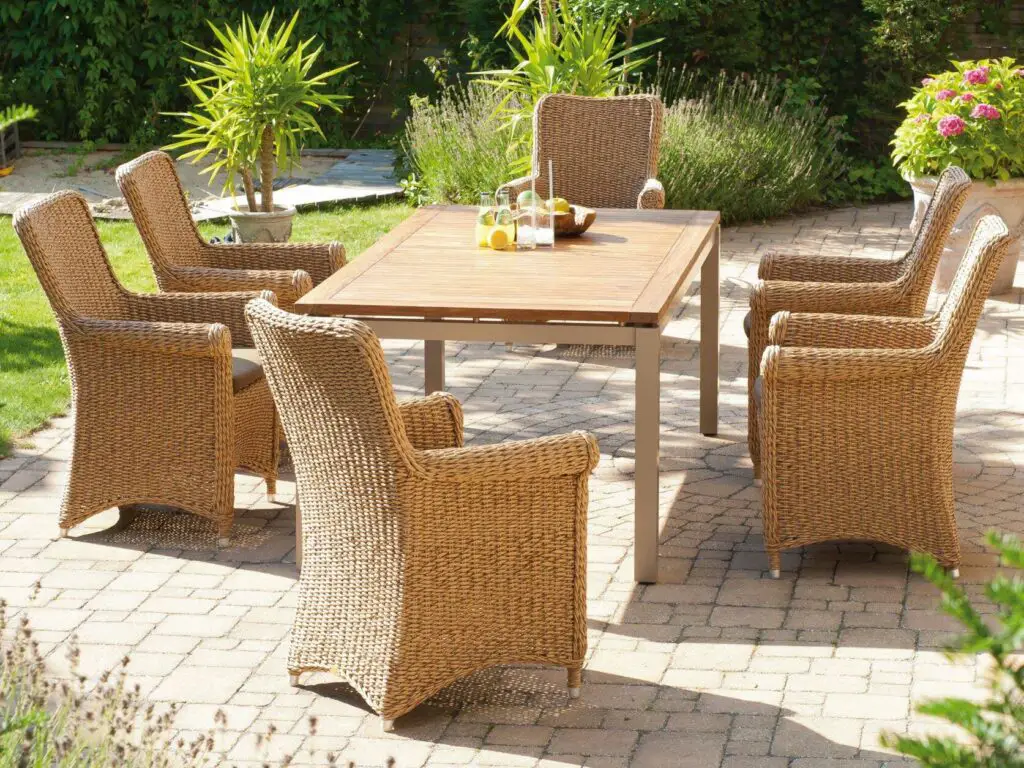
Conclusion
Establishing focal points and creating distinct zones for various activities encourages a harmonious flow, making your patio inviting and visually appealing. Paying attention to proportions and traffic flow ensures that your furniture arrangement feels balanced and accessible, while the incorporation of cozy accessories and comfortable elements adds a touch of luxury and relaxation.
Embrace the opportunity to personalize your patio through the use of accessories, lighting, and planters that reflect your unique taste and personality. Additionally, prioritize the practicality of weather-resistant materials and maintenance to ensure your patio furniture remains in top condition for years to come.
As you embark on the journey of arranging patio furniture, remember that there are no strict rules, and creativity knows no bounds. Experiment with various layouts and design elements to discover what resonates best with your vision and lifestyle. Your patio should be a reflection of your passions and a sanctuary where you can unwind, entertain, and appreciate the beauty of the outdoors.



